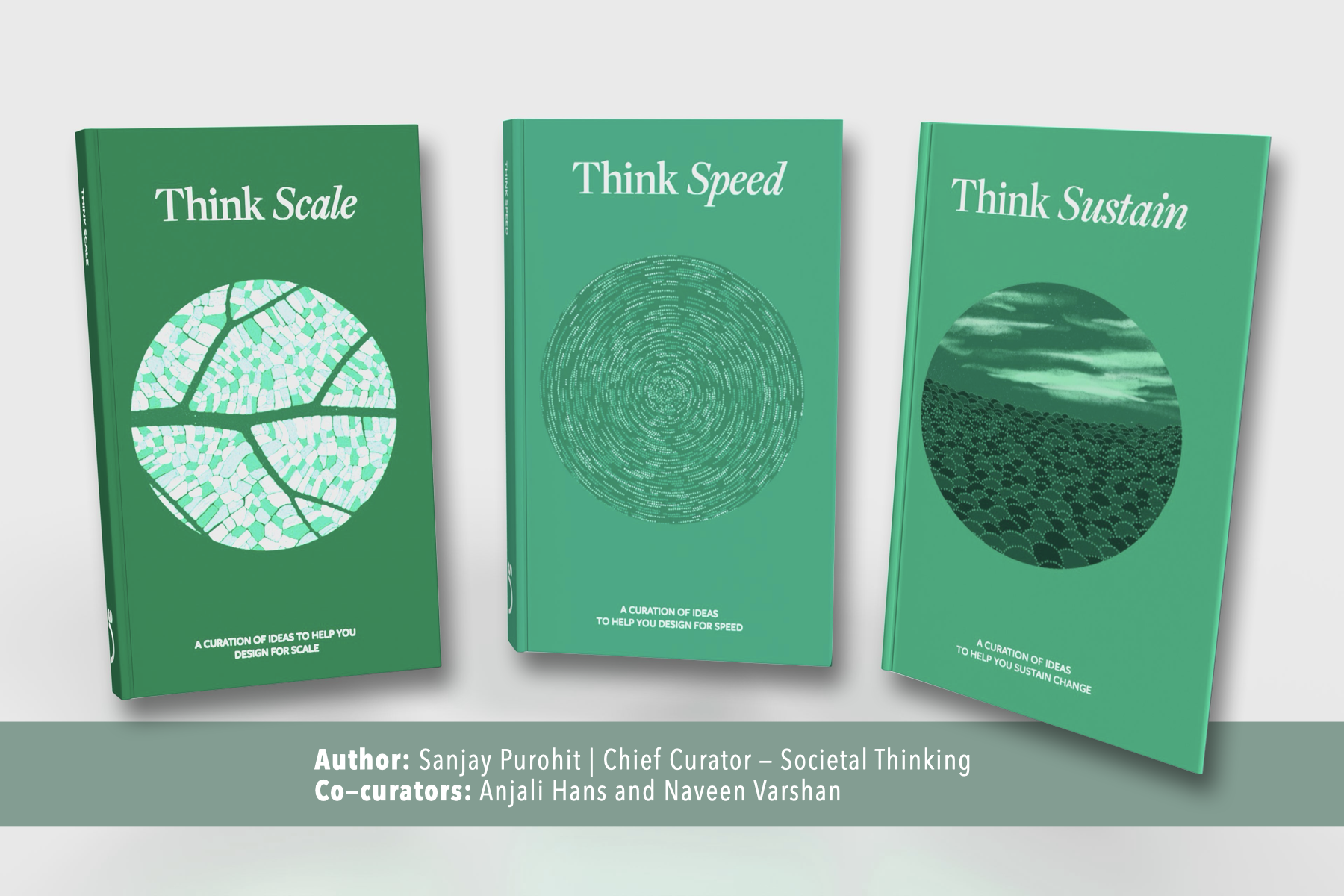I recently re-read the “Journey to the Centre of the Earth ” with my 8-year-old son and travelled back in time to traverse subterranean oceans, meet dinosaurs and other prehistoric beasts, and finally shoot out of the earth’s belly into modern day Italy.
″… I can hardly believe my eyes. Who would have ever imagined, under this terrestrial crust, an ocean with ebbing and flowing tides, with winds and storms?”
Sounds just like the conversations I have been hearing of late!
In our universe, change leaders from across the globe are trying to answer the question “What works at scale”. As a co-traveller with them, we hear the wonder of reimagination, we see the hard work of orchestration and feel the effort it takes to mobilise an entire ecosystem. This journey of inducing impact at scale is akin to setting sail on an adventurous voyage through many rapids, meadows, whirlpools and sometimes bigger barriers. We call them chasms.
In the fictional world of a braver-than-thou lone hero taking on the world (like Professor Otto), they just magically fly (or raft!) over the chasms by themselves. But in the real world of tackling social problems, it takes a village to create the bridges that change leaders can use to cross these chasms. But, what are these chasms? Here are a few that we have encountered as a co-traveller.
- Knowledge chasm: To understand what will work to drive impact at scale, the first and the most important step is to look at the problem at scale, with all its diversity and complexity. Something that Einstein has famously said is “If I had 1 hour to solve a problem, I would spend 55 minutes on the problem”. At scale the problems may look different, one may notice dependencies or actors that are not visible otherwise or in some cases, find that the first problem to solve is very different. But no one person has the entire view. So change leaders have to find diverse people who can help them piece together this puzzle – a puzzle whose shape or size is unknown.
- Reimagination chasm: Disruption requires a complete reimagination of solving for impact at scale, not doing more of “What works”. For e.g. Bringing access to quality education to 2000 students works very differently from doing so for 200 Mn students. The solution that will work for 200 Mn children is not a solution for 2000 children times 10000, it is a completely new reimagination of a world that doesn’t exist today. However, what we hear from change leaders is “How do I imagine this bold future? How do I foresee the future in the context of the problem I am solving?”
- Design-action chasm: We hear some change leaders say “I feel confused; I know I can’t go back to doing what I was doing, but how do I get started on the things that I want to try” or “How do I prototype and validate my experiments?” This is a problem that requires a variety of “experiment funders” and sometimes small teams of experts who can help build the pilots.
- Conviction chasm: There is support (acceptance, resources and funding) available for tried and tested solutions, but how can one build conviction in board, teams and funders to embark on these audacious journeys into unchartered territories?
- Coordination chasm: Impact at population scale requires gearing up an entire ecosystem (across civil society, markets and government) towards a theory of change and then building momentum to act. It needs many types of doers and many types of enablers to work together. Some leaders tell us “I am a doer, I know how to take action, but how do I coordinate such an ecosystem?”
- Mobilisation chasm: Someone asked Nandan Nilekani, the founding chairman of UIDAI, how much is the cost of Aadhaar, he said 1Bn dollars, but at population scale that translates to just $1 per person and has unlocked savings of 1000x more for citizens, governments, markets. Solving at population scale requires a sustainable source of funding. This means looking at funders from the sense of who is the right funder at the right time in the journey, who can fund actively, and who can contribute in non-financial ways. “I have a plan of action, but how can I make it sustainable at scale?”
- Underpinning all these chasms is a deeply personal chasm, one of Self-Efficacy. An audacious mission that works in a non-traditional avatar, results in questions of “Am I ready? Can I pull this off? Can my team and I change the way we work?” A change leader’s journey may be lonely, especially for someone who is traversing an unchartered territory.
These chasms can make the journey to impact at scale more difficult, but not impossible. Change leaders can enter the chasms and fight their way out, but the journey will become slower and more challenging. In today’s fast-changing world, we need bridges, ladders or rafts that change leaders can take to cross the chasms faster.
We are attempting to cross some of these chasms with change leaders in 5 domains and 5 geographies, through our Societal Scalers program. But to do so for a large number of entrepreneurs solving diverse problems across the globe, we need a village to come together to support them.
What chasms do you see? What chasms have you faced? What ladders, bridges and rafts can you build for change leaders to cross these chasms?
 Back
Back


